Short on garden space? You can still grow your favorite vegetables on a balcony, on a deck, on a roof top, or in a small side yard. Growing vegetables in small urban spaces is easier however if you opt for growing baby vegetables (aka mini vegetables).
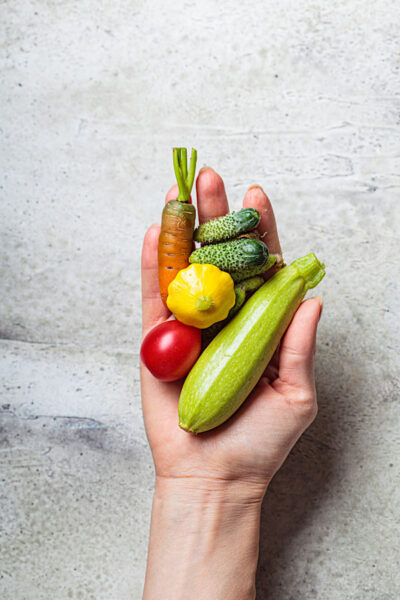
Jump to: Benefits and Nutrition of Baby Veggies | Popular Baby Vegetables for Containers | Garden Design with Baby Vegetables
This post may contain affiliate links. As an Amazon Associate, I also earn from qualifying purchases. You can read our disclosure information here–
What Are Baby Vegetables (aka Mini-Vegetables)?
As the name suggests, baby vegetables are tiny versions of the common “regular” veggies. There are loads of different baby vegetables, but they can be divided into two main groups based on how they’re produced.
Baby vegetables (or mini vegetables) typically fall into one of these categories:
- Selectively bred dwarf varieties that will always produce smaller fruit (and often mean a smaller plant). Examples would include:
- determinate patio type of tomatoes
- dwarf carrots,
- dwarf cucumber
- Tom Thumb shelling peas
- Vegetables that are picked earlier than usual, but the plant itself would be a normal size. Examples would include:
- baby spinach & greens
- baby cauliflower
- baby zucchini

And by the way, baby fruits also exist. If I lived in a warmer climate, for example, I would definitely grow my own dwarf pineapples!
Benefits of Growing Mini Vegetables
If you haven’t tried mini vegetables before, it can be difficult to see why someone would choose to grow tiny veg. Isn’t that just the same amount of effort, but with a smaller yield at the end?
Well, yes, the vegetables themselves will be smaller, but there are actually a lot of advantages….
The #1 advantage for urban gardeners is making the most of a small space.
Shorter root systems make them easier to grow in containers than full-sized veg, and the plants can be placed closer together. Saves room on the balcony for a small table and chair to savor the harvest!
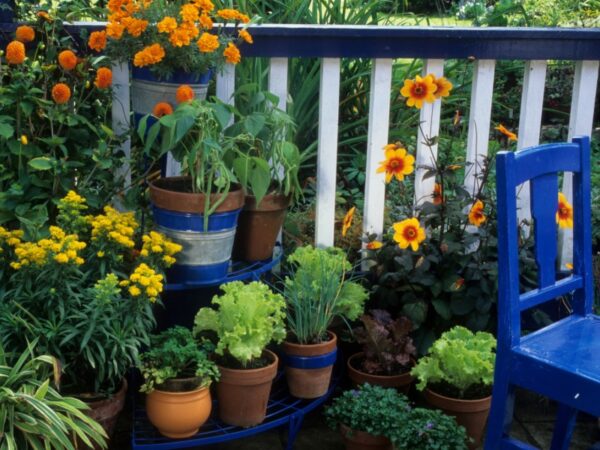
Saving space is not the only benefit of growing baby vegetables however! Here are a few other advantages of including these miniature veggies:
- They taste great. The flavor tends to be less bitter, and the vegetables are noticeably more tender.
- They’re so cute! A beautiful baby vegetable salad or crudité platter looks great for Summer entertaining.
- Most are easy to grow, even if you’ve never had a veggie garden before.
- They grow fast and mature quicker. This means you’ll get smaller amounts of produce, but you’ll get it more often—perfect if you don’t like the regular “get nothing for months and then receive a vegetable tsunami” type of gardening.
- Extending the season: You can keep starting new seeds for things like carrots and beets (aka succession planting).
- Variety: growing smaller plants allows you to try more varieties than if you went for full-sized vegetables, so your urban garden will be bursting with colors and textures all summer long.
Are Mini Vegetables as Nutritious as Traditional Veg?
As often happens, the answer is: it depends. Annoying, right?
An interesting 2021 study, for example, found that mini cabbage and corn were a little less nutritious than their full-sized counterparts. However, it also found that mini pineapple was more nutritious, and that baby carrots had more vitamin C than large ones.
A 2015 study that looked at Micro-Tom mini tomatoes found them to have very similar profiles to normal sized tomatoes.
A 2017 study showed that across three cultivars, kale had more minerals when it was picked early.
Lastly, I want to point out something very important. Home-grown vegetables are always more nutritious than store-bought ones that have had to travel far to reach your table.
Researchers have found that in 5-10 days, the loss in nutrients can be a whopping 50%!
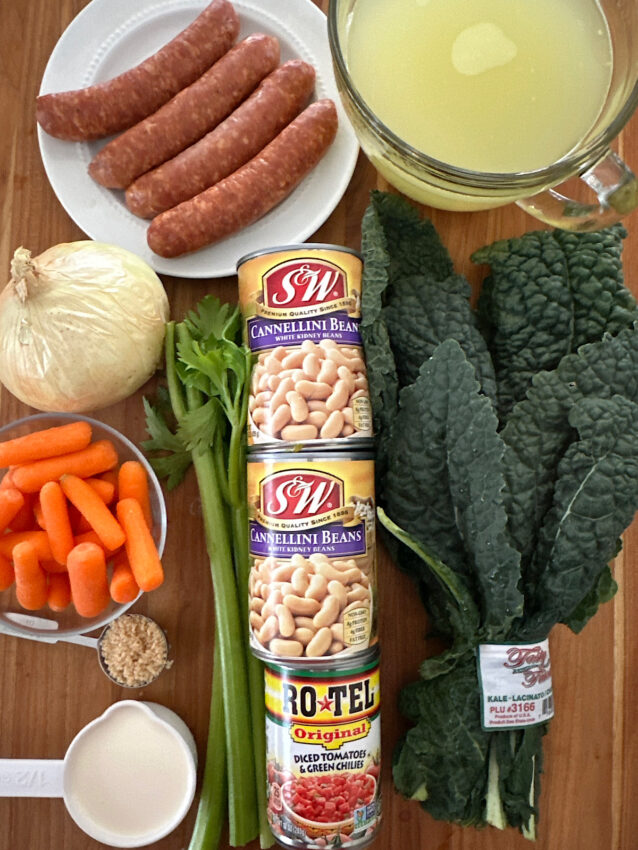
Popular Mini Vegetables for Balcony Gardens and Containers
Did you know that baby versions exist for pretty much all popular vegetables? Even a mini veggie garden can burst with variety, and the fact that less space is available doesn’t have to limit you at all.

Here are my favorite mini vegetable varieties. Both the plants and the crops stay small in most cases, and they can be grown in containers:
| Veggie | Varieties | Container Tips |
|---|---|---|
| Baby carrots | ‘Thumbelina’, ‘Babette’, ‘Minicor’ | 8″ deep; 1-2″ apart in pot |
| Tomatoes | cherry tomatoes, ‘Yellow Pear’; ‘Patio’, ‘Tumbler’, ‘Red Currant’ | 5+ gallon pot or hanging basket |
| Baby bell peppers | ‘Baby Belle’, ‘Yummy’ | 8″ deep – 12 ” diameter |
| Chile peppers | ‘Pretty in Purple’, ornamentals | |
| Baby cabbages | Pixie’, Gonzales | 5 gallon pot – 12″ diameter |
| Baby pumpkin | ‘Jack Be Little’, ‘Baby Boo’ | 5 gallon; vertical trellis |
| Baby eggplant | Bambino, ‘Little Prince’, ‘Slim Jim’ | 1 plant per container; 2 gal. minimum |
| Baby broccoli (broccolini) | ‘Small Miracle’, ‘Green Midget’ | pot with 12″ diameter |
| Baby cauliflower | Igloo’, ‘Snowball | 4 plants per 18″ wide pot |
| Baby green beans | ‘Astrelle’, ‘Dandy’, ‘Mini Green’ | 2″ apart in 18″ side pot |
| Baby beets | Babybea’, ‘Baby Ball’, German baby’ | 4-6″ deep; 2-3″ apart in pot |
| Baby corn | ‘Chires Baby’ | pot with 12-16″ deep |
| Baby cucumber | ‘Bush Pickle’, ‘Green Fingers’ | space 4-6″ apart & use trellis |
| Shelling peas | ‘Tom Thumb’ | use vertical trellis |
| Baby greens & Mesclun | bok choy, & Asian greens, spring mixes of lettuce and greens | minimum of 6″ deep |
| Baby potatoes | ‘Red Thumb’, French fingerling (‘Larette’). Rose Fin Apple’ | |
| Zucchini | ‘Black Forest’ | 2′ wide pot; trellis |
As mentioned, there are also vegetables that are referred to as “baby” vegetables because they’re picked early. You can do this with zucchini, leeks, bok choy, and many more.
Just know that even if you harvest vegetables early to get a smaller size, the plants themselves can still become huge if you let them grow.
Tip: Keep a close eye on your mini veggies in summer. Their small root systems can dry out quickly, especially when they’re grown in containers.
Designing an Urban Kitchen Garden with Mini Vegetables
Don’t have much space to spare? As mentioned, baby or mini vegetables are the perfect choice for urban gardens.
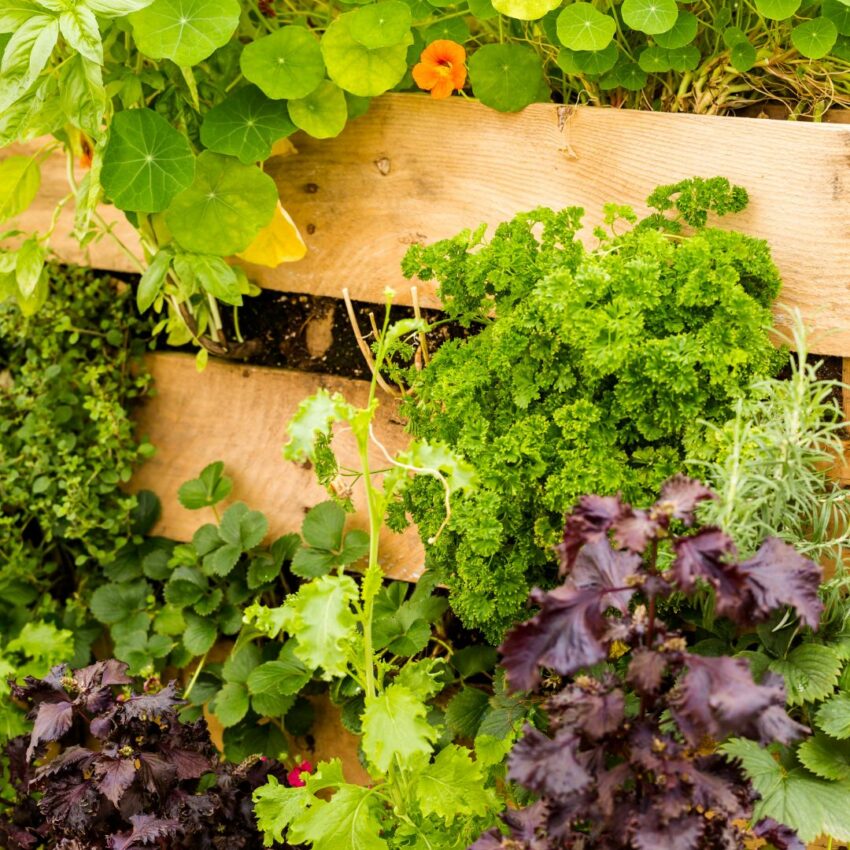
Here are some of my top tips, many of which I expand upon in the post on vertical gardening for small spaces.
- Try some cherry tomatoes in hanging baskets.
- Use railing planters for things like mini carrots or beets.
- Wall trellises are perfect for baby pumpkin and squash.
- Use existing “trellises”, like balcony railings, for beans.
Cooking with Baby Vegetables
Miniature vegetables will take a much shorter time to cook. They are often used to dress up salads or add to a party platter (aka a crudités platter).

Try this brunch recipe from the Pioneer Woman for something fun at Easter!
Stay tuned to my evolving recipe index this Summer. We are designing an Italian kitchen garden, a French potager garden, and an herbal tea garden. There are sure to be recipes from early harvests of tiny veggies in these gardens.
If you like my articles about cooking and gardening, subscribe to my weekly newsletter, where I share free recipes and gardening tutorials.
Sources & further reading
- Bellows, A. C., Brown, K., & Smit, J. (2013). Health Benefits of Urban Agriculture, paper and research conducted by members of the Community Food Security Coalition’s North American Initiative on Urban Agriculture.
- Flores, P., Hernández, V., Hellín, P., Fenoll, J., Cava, J., Mestre, T., & Martínez, V. (2016). Metabolite profile of the tomato dwarf cultivar Micro‐Tom and comparative response to saline and nutritional stresses with regard to a commercial cultivar. Journal of the Science of Food and Agriculture, 96(5), 1562-1570.
- Waterland, N. L., Moon, Y., Tou, J. C., Kim, M. J., Pena-Yewtukhiw, E. M., & Park, S. (2017). Mineral content differs among microgreen, baby leaf, and adult stages in three cultivars of kale. HortScience, 52(4), 566-571.
- Wang, J., Ma, T., Wang, L., Lan, T., Fang, Y., & Sun, X. (2021). Research on the consumption trend, nutritional value, biological activity evaluation, and sensory properties of mini fruits and vegetables. Foods, 10(12), 2966.

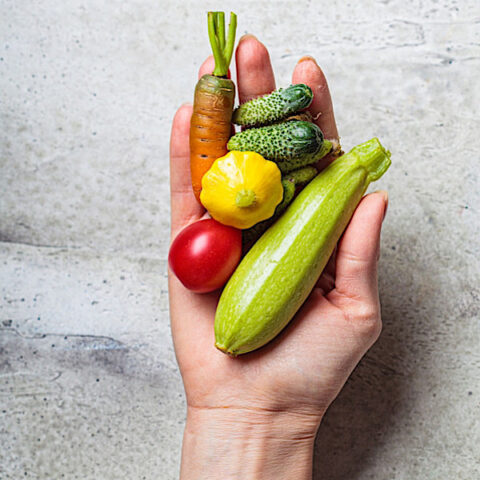
Leave a comment